Curry Laksa
If you haven’t heard of “Nyonya”, chances are you have eaten it instead. Yeah. It may not have been as justly popularized as Thai or Vietnamese, but its low-key awesomeness is in every Southeast Asian restaurant. The word itself means the union between Chinese and Malays, and the fushion cuisine thus born which is PURE MAGIC. So then… why am I struggling to finish this post after writing then tearing (…symbolically) and rewriting again? Because I JUST can’t escape the thought that people would come, and see, and “huh??” and just FADE OUT. And I’m exhausting all my aren’t-really-there writing skills in an attempt to make this sound like a Rachel Ray’s which has let me to a desperate conclusion to say that… it isn’t. Yes, it is complicated and consists of a blinding array of exotic ingredients. And chances are if you weren’t those who have true affection for a bowl of spicy noodles, I’ve lost you somewhere along the second sentence. BUT if you are those like me, it would be worth the while.
And if you are those like me, you’d be familiar with curry Laksa – one of the better known members of Nyonya cuisine which is essentially a (damn good) bowl of noodle in curry broth. For easy-explaining sake, the dish can be broken down into four parts: First there’s the curry paste for the broth. Then the toppings which can be really flexible. Then the type of noodles that goes in. And finally the chili sauce that goes with it at the end.
The curry paste for the broth is probably the naughtiest of bunch, requiring stuff that would’t be easily found at the corner grocer. But they are available on the internet (like Amazon) and Asian supermarket. The hard part is finding the ingredients, after which everything is just tossed into a food processor and pureed.
And then there’s the “toppings”, which are traditionally fried tofu, shrimps, fish balls, shellfish and what-not. I would say aside from tofu and shrimps, this is where you can be really flexible. The shrimp shells from the shrimps are important for flavoring the broth, and the tofu is there to suck it all up. The shrimps can then be added to the broth as a topping, but I like to turn them into shrimp-meatballs because I like all-things-ground-up-and-ball-shaped.
At almost every food stalls in Asia, there’s bound to be a bowl of chili sauce/condiments of some sort for us hot-junkies to adjust the spiciness at will. At this point I really try to make life simpler for myself and try not to overachieve, which led to a spicy meat sauce with only 5 ingredients and easy to make.
At last there’s the “noodle”, which goes from yellow Taiwanese noodles to wide rice vermicelli to thin rice vermicelli. I personally prefer the very thin rice vermicelli, but flat and broader Vietnamese vermicelli is probably more common in supermarkets. By all means use what’s available.
Servings: 4 bowls
Believe it or not, a real authentic Curry Laksa consists of a couple more ingredients than what’s listed below. But I figured if it’s too hard for me to get my hands on, it should and better be for everyone else so…
Curry Broth:
- 110 g of diced galangal(a type of ginger)
- 60 g of diced lemongrass
- 3 ~ 4 diced shallots
- 40 g of dry shrimp
- 40 g of belacan (shrimp paste)
- 2 cloves of garlic
- 14 dry chili
- 2 tbsp of shrimp fat (comes in cans)
- 1 1/2 tsp of curry powder
- Shells from 8 medium~large shrimps
- 1200 ml of coconut milk (3 cans)
- 500 ml of chicken stock
Toppings:
- 1 chicken leg
- 12 deep fried tofu
- 10 frozen tofu
- Shrimp meatballs
- 8 medium ~ large shrimps
- 100 g of ground pork
- 2 tsp of corn starch
- 1 tsp of fish sauce
- 1/8 tsp of white pepper
Chili Meat Sauce:
- 100 g of ground pork
- 2 cloves of garlic
- 2 large shallots
- 30 g of dry shrimp
- 2 tbsp of chili flakes
- 5 tbsp of oil
- Yellow noodles or rice vermicelli
- Bean sprouts
Put the galangal, lemon grass, shallots, dry shrimp, garlic, dry chili, belacon in the food processor and pulse until finely chopped or pureed. Add the shrimp fat and curry powder, and pulse again until combined. There. That’s the curry paste. Simpler than it looks, doesn’t it. Heat up 7 tbsp of oil and fry the curry paste and shrimp shells on medium heat until fragrant, then add the coconut milk and chicken stock and bring to a simmer. Add the chicken leg from “toppings” into the stock and simmer for 40 ~ 50 min. Skim off the foam on the surface from time to time.
Prepare the rest of the component during this time. For toppings, blanch the deep fried tofu in boiling water for 5 min before using. If deep fried tofu is hard to find then just use cubed frozen tofu, which is literally tofu that’s FROZEN. It is porous like a sponge which will soak up the stock just like deep fried tofu. For the shrimp balls, place shrimps, ground pork, corn starch, fish sauce and white pepper in the food processor and puree until glutenous and sticky. Set aside in a bowl.
For the chili meat sauce, put ground pork, garlic, shallots and dry shrimp in the food processor and puree. Heat up 5 tbsp of oil in a pot and brown the mixture until dark brown and caramelized. Use a wooden spoon to break up the mixture as finely as possible. Stir in the chili flakes then turn off the heat. Mix well and set aside. The dry shrimp I’m using is quite salty to begin with, but if using a less salty dry shrimp, add fish sauce or belacan (shrimp paste) to adjust the saltiness.
When the curry broth is ready, remove the cooked chicken leg and let cool on a plate. Strain the broth through a fine sieve and press on the sieve to get as much broth out of it as possible. Bring the broth back to a simmer, and add the deep fried tofu and frozen tofu. Use a spoon the scoop the shrimp ball mixture (1 tbsp at a time) into the broth and let everything cook for 15 min or more. Adjust the seasoning with salt and sugar. Remove the meat from the chicken leg and cut into slices.
Bring a pot of water to boil and cook the noodle of your choice. When the noodle or rice vermicelli is cooked through, add the bean sprouts and cook for 10 sec. Strain the noodles/vermicelli really well and place in a bowl. Add the toppings onto the noodle and ladle the curry broth to cover and add the chili meat sauce to taste. I hope you enjoy it as much as I did.




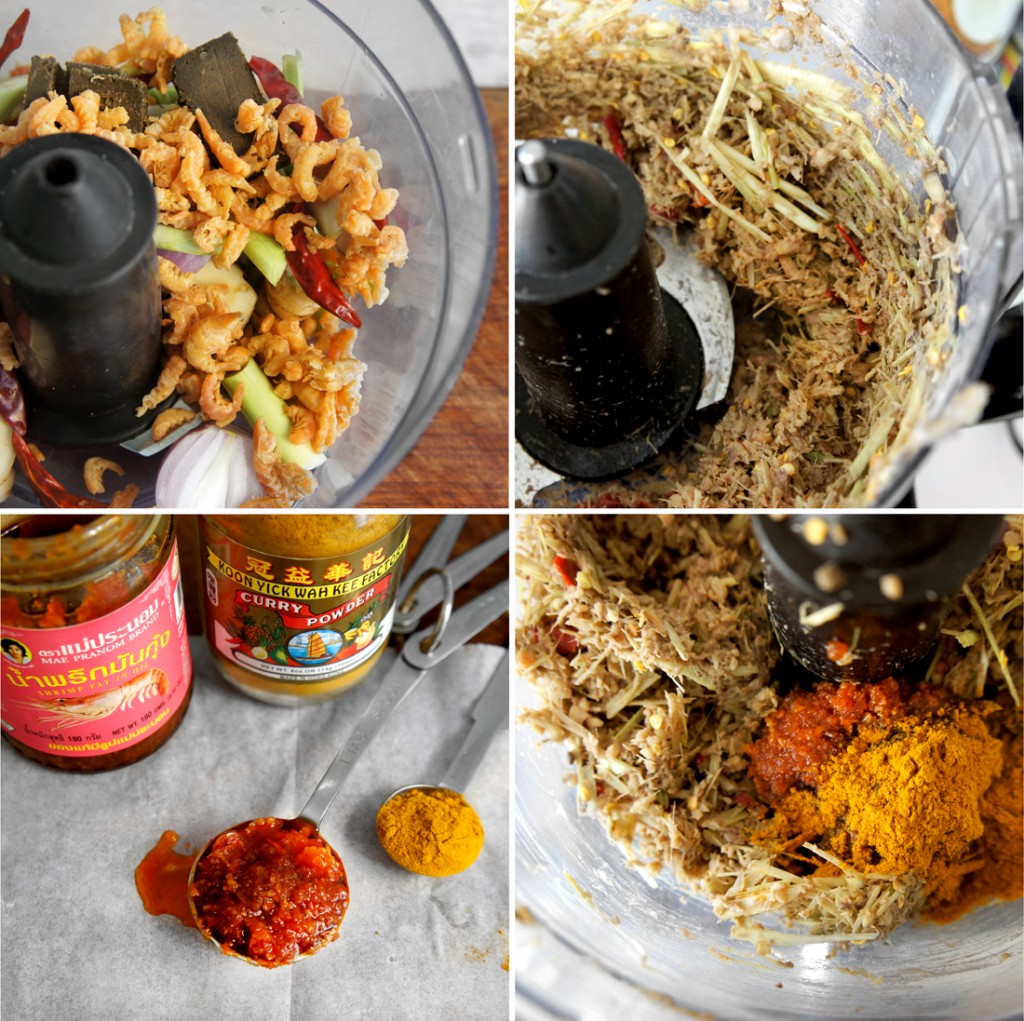
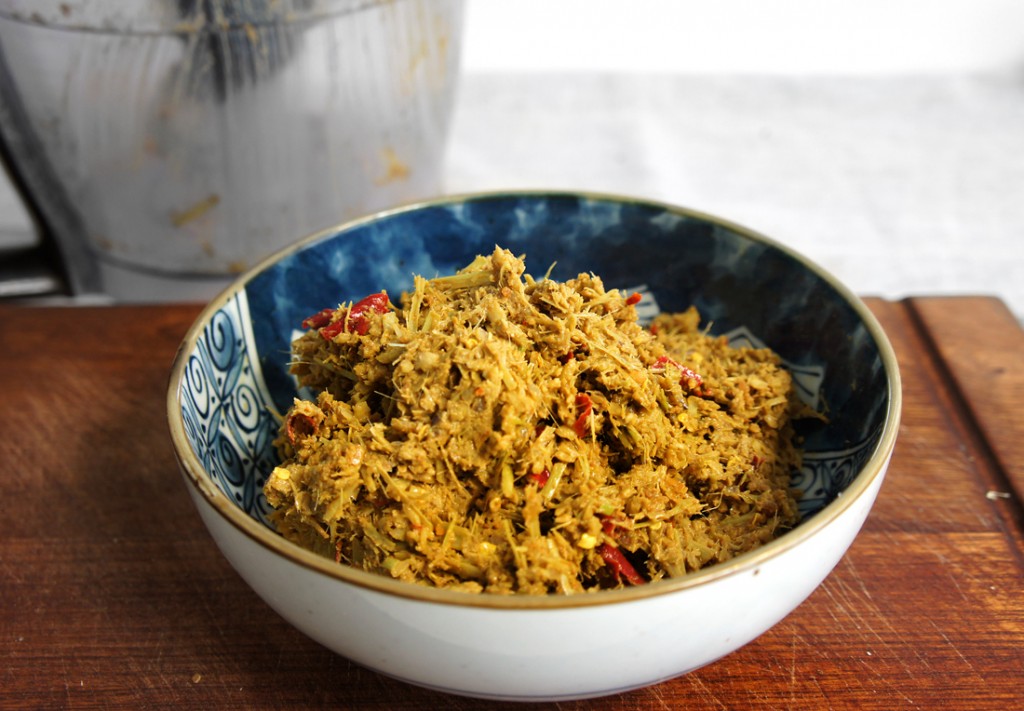
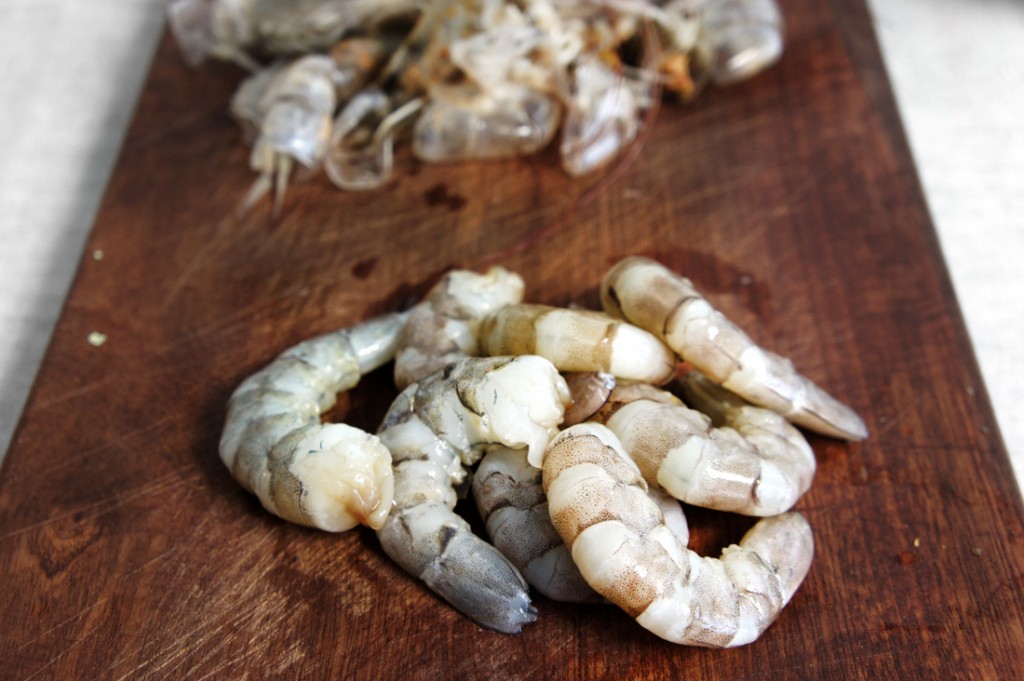
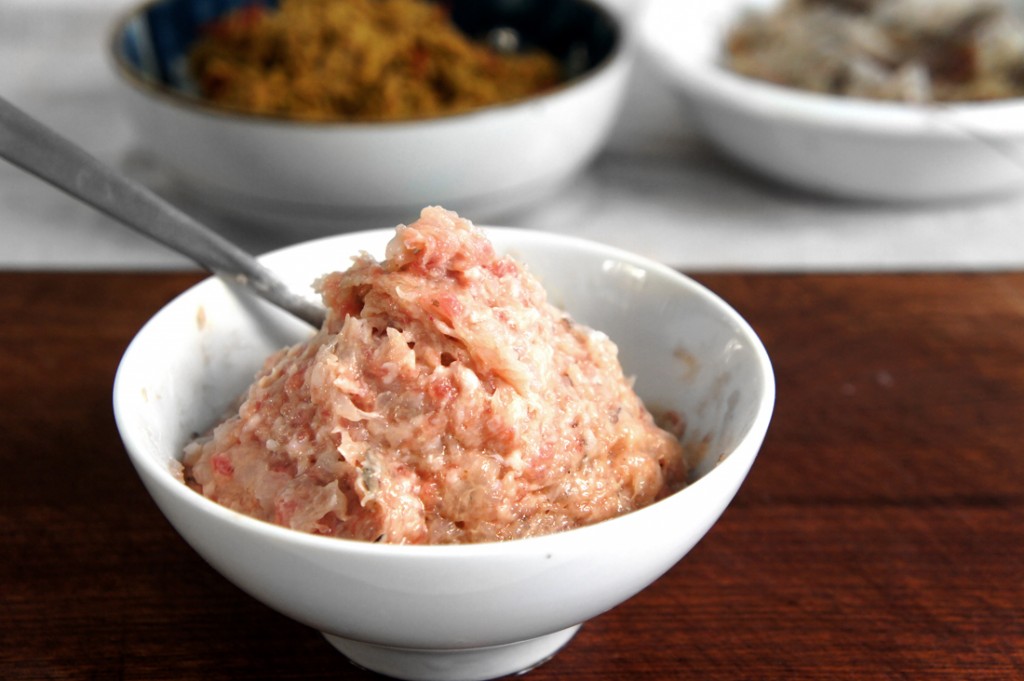
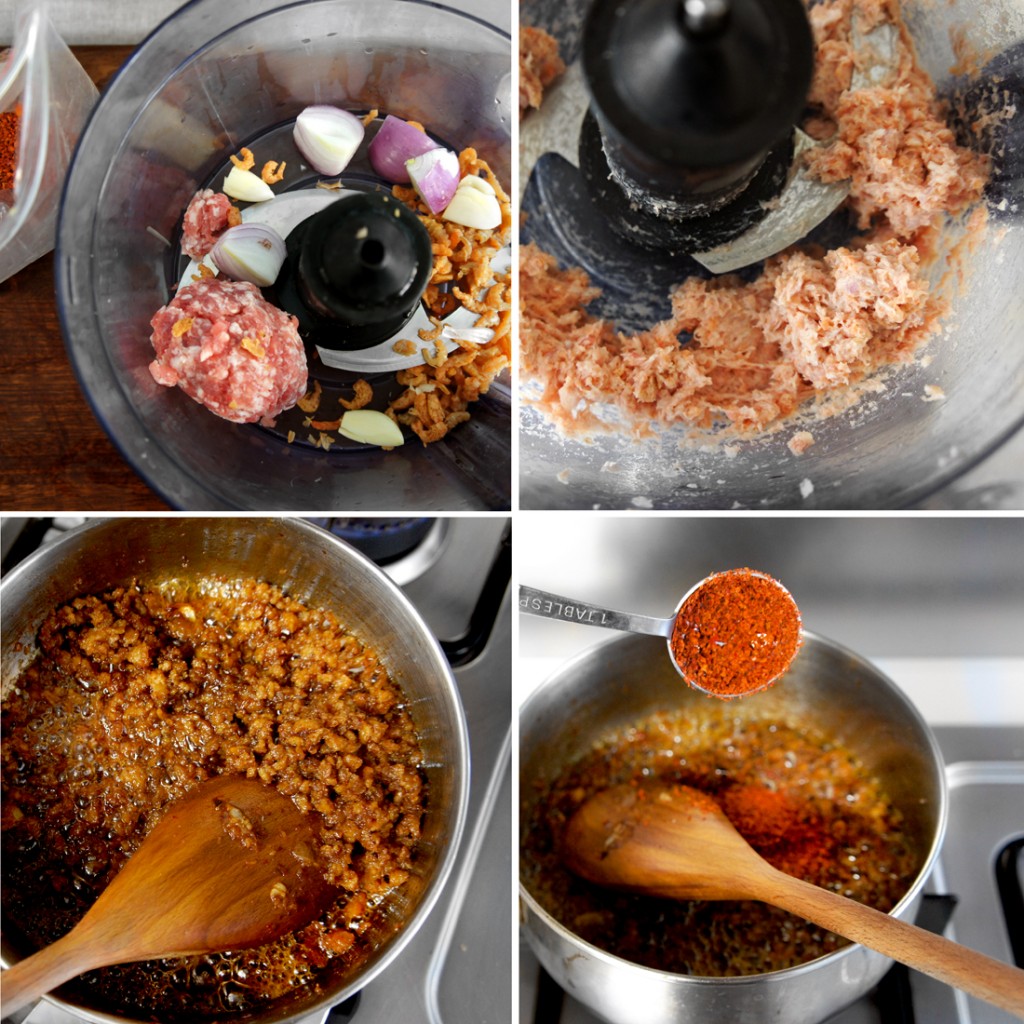
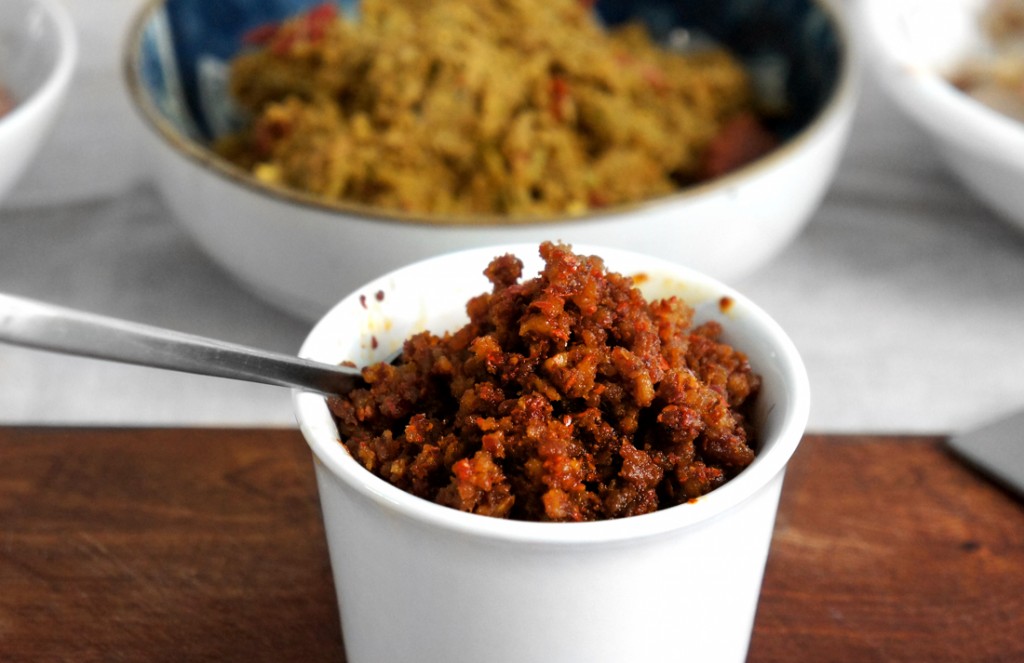
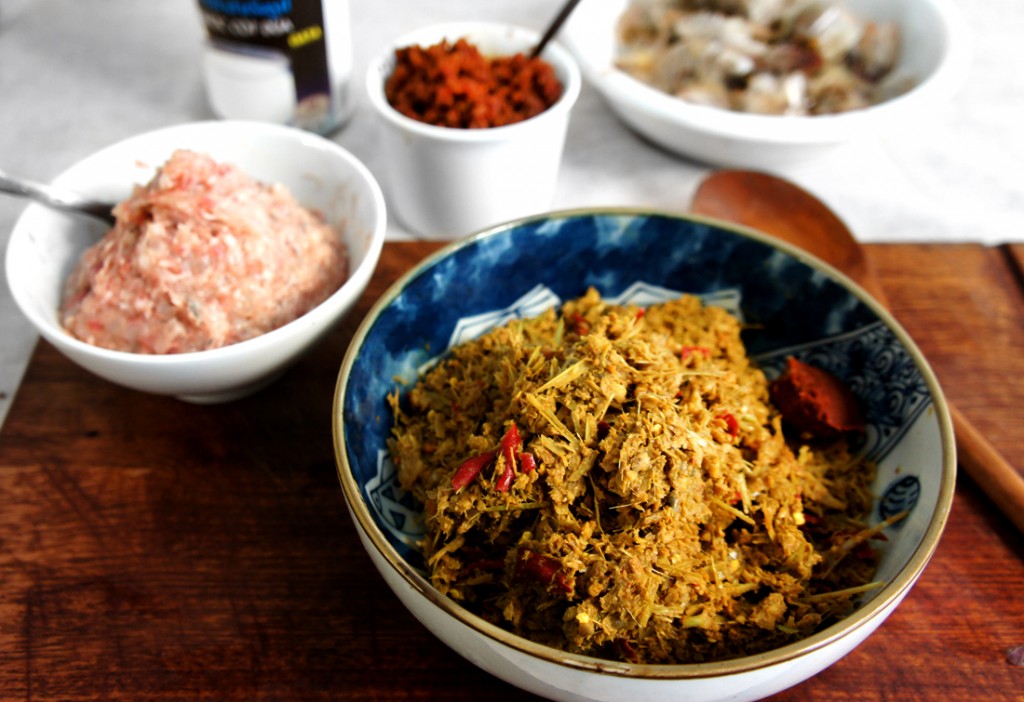


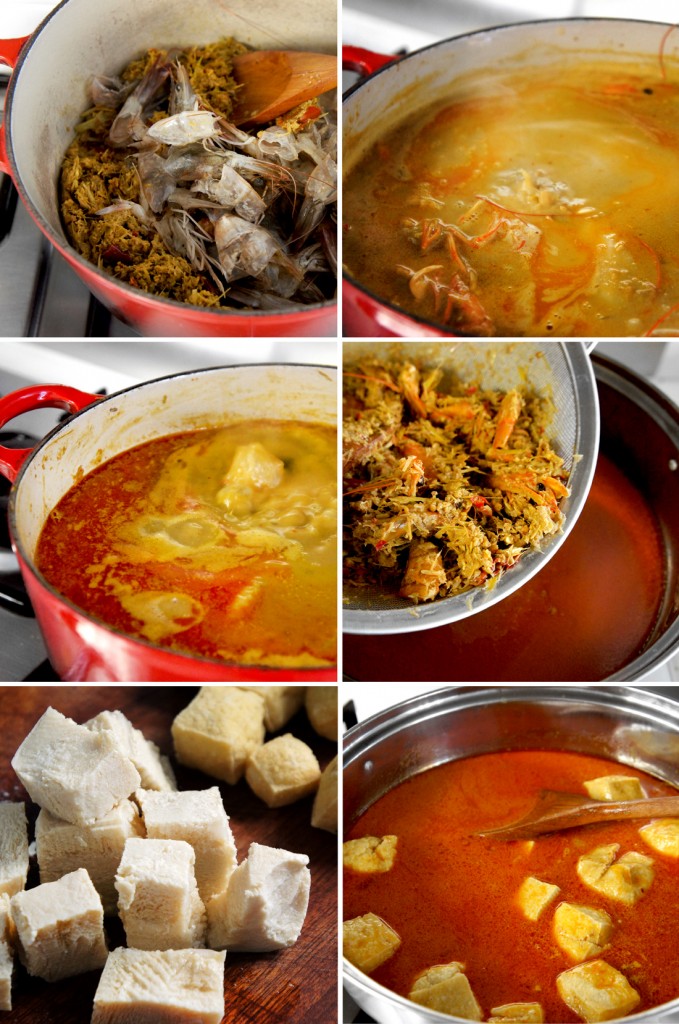


Sarah
05.24.2013at10:17 PMAhhh.. I will need to dedicate a day to making this. It’s a real shame that I can’t make anything Malaysian apart from a damn good Milo (thanks Dad) and a pathetic version of chicken rice!
P.S. I LOVE your blog…
Mandy L.
05.25.2013at1:14 AMSarah, I have since then come up with a quick version of laksa. I can share with you later once I get the measurement down :). And about chicken rice, I have a twisted version of it as well in this blog. You can search for it if you are interested :). Love Malaysian food!
Adelina
02.13.2014at11:24 AMI’m of Nyonya descent and couldn’t be more surprised to find a recipe that’s so true to the original! Though it would be hard for me recreate since I live in the States… Just means I gotta make a quick trip home just for one of these!
mandy@ladyandpups.com
02.13.2014at11:45 AMAdelina, I have a “cheat” version :) Maybe i’ll publish that one soon.
Jasmine
03.10.2014at10:52 PMI will be making this one very soon, probably before the Taiwan beef noodles! Thank God I have plenty of Asian stores around here, including a huge one where I can get all the ingredients needed. Although I did order shrimp paste online last year because no one around here had the good kind. Do some people add blood to this dish when they make it?
Thanks for sharing!
mandy@ladyandpups.com
03.10.2014at11:28 PMJasmine, hm… not that i’ve had a laksa with blood in it (or you mean blood cake?). At least the Penang version or the Singapore version doesn’t.
Jasmine
03.11.2014at1:45 AMI have seen a couple recipes that include blood cubes and also blood cockles. Blood is one of the few things I don’t eat so I was curious if it was the norm. According to this post by Rasa Malaysia most people don’t include it so much nowadays. I think your recipe looks perfect!
http://rasamalaysia.com/penang-curry-mee-recipe/
Jodie
07.07.2014at7:42 PMOh my goodness! Impressive article dude! Thank you, However I am going through troubles with your RSS.
I don’t understand the reason why I can’t subscribe to it.
Is there anyone else having the same RSS issues?
Anyone that knows the answer will you kindly respond? Thanx!!
mandy@ladyandpups
07.07.2014at10:48 PMJODIE: Hi, what RSS issue? Are you using feedly?
jeannie
08.03.2014at6:04 AMstumbled upon your blog and am so excited to see this recipe. I know what I’ll be doing next weekend! :) Thanks for sharing !
Evelyn
12.28.2014at10:59 PMmy cheat version is using the instant prima laksa la mian and topping with ingredients. Cured my homesickness when i was abroad extended period of time
Dave
11.29.2015at11:15 PMThanks. After years of trying to perfect laksa I finally strained the broth, which no recipe ever tells you to do, instead they imply the paste will be very fine. Googled ‘laksa strain’ because the results we so good And found this, which is honestly the most complete laksa recipe I have found. Thanks again, it feels like I’ve finally unlocked the secret!
Misha
04.04.2016at3:28 AMThat looks so good! I am totally up for the challenge. Thank you so much for providing the most detailed instructions with photos and steps. Then again you do that for all your recipes that is why I love your site so much. I live in San Diego, California so thank goodness getting the required ingredients is easy as a trip to the Vietnamese or Chinese mega supermarkets. I have my list and out the door! This will be my Sunday afternoon project.
86Debbie
08.26.2017at3:54 PMI have noticed you don’t monetize your page, don’t waste
your traffic, you can earn additional cash every month because you’ve got hi quality content.
If you want to know how to make extra $$$, search for:
best adsense alternative Wrastain’s tools